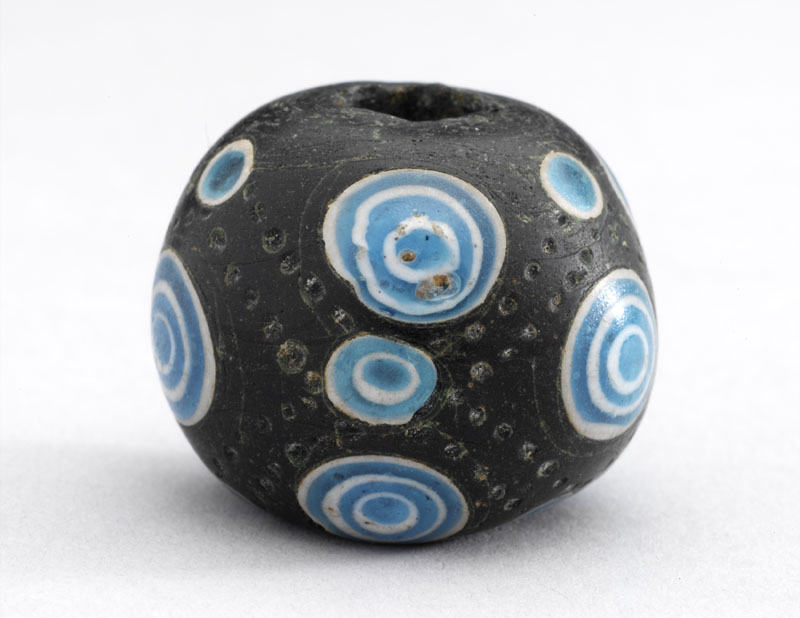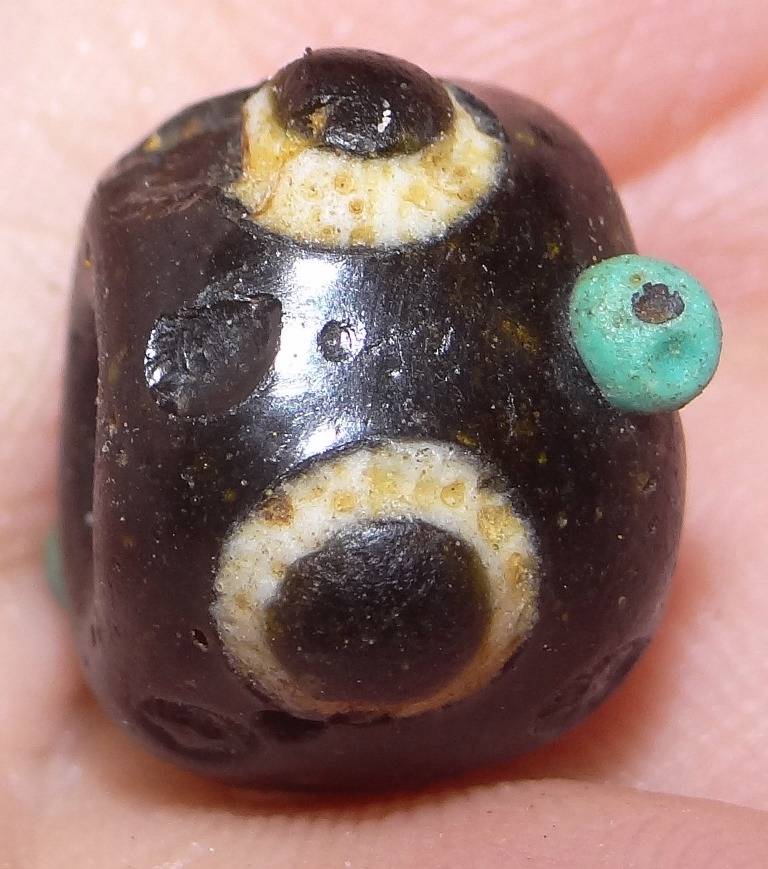| "Drilled" holes and "modern" red | |||||
| Re: Warring States Beads -- floorkasp | Post Reply | Edit | Forum | Where am I? | |
10/25/2015, 20:01:38
1 The supposedly “drilled” holes. It’s foolhardy, I know, to disagree with Jamey Allen because he is so much more knowledgeable than any of us about bead history and technology. But I agree with Floor on this. I simply can’t see the rationale for the claim that the holes for the “lattice pattern” (as Kwan calls it) of tiny dots on Warring States glass beads were drilled out of the cold core of the glass tube and then, presumably, topped up with molten glass. I’m attaching again to this post the bead from the ROM that has lost its glass dots. I hope anyone who is reading this will look at it closely. To my eyes, the holes are neither uniform in size nor in shape, which is how they would presumably appear if they were drilled. Instead, they look much more like the holes that occur when one element in a glass pattern drops out of the core beneath it. So, if this is a characteristic that is found on one undoubtedly authentic bead (and it appears on many more), it can’t be a sign of another bead being a fake, can it? I’ll also attach an ancient West Asian bead where a similar effect is seen; so far there’s no theory I’ve heard of that those holes were drilled.
Fred talks about his view being shared by “specialists in Beijing,” and it would be good to know who they are. I should point out that there’s nothing that I can find in Kwan’s text to support the suggestion that the holes were drilled, and I can see nothing in the research of the two most significant scholars who have studied ancient Chinese glass in recent years, An Jiayao and Gan Fuxi. It would certainly be important to them, because this would be the first example of glass in China being worked in a lapidary way, and an example of jade technology spilling into glass beadmaking.
2. The supposedly “modern” colour of the small reddish brown dots on Kika’s beads. In fact, there are several examples of similar red-brown eyes on beads in Kwan’s collection; look at examples on pages 185 and 187 for a start. There are many more. This red-brown glass is also quite close to the rich brown that one finds in the glazed patterns on many of the Warring States beads with pottery-cores. In any case, it’s definitely not a “modern” red.
Finally, I would just refer to Fred’s claim that: “At times, Curio City in Beijing has been flooded with better copies than (Kika’s) black red and white one.” Well if there is such a flood of such copies, surely there must be many images of them somewhere, in archives or for sale on the internet. I’d love to see just one.
All the best,
Will


|